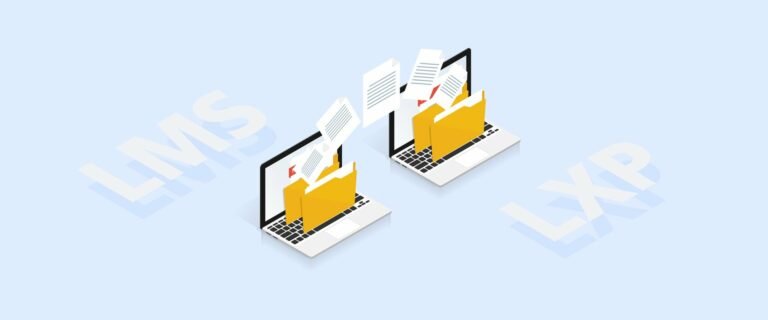How to develop online training in 2022?
It is important to remember that e-learning is constantly changing. This means that you need to keep up with the latest trends and technologies. This will ensure that your online training is always up-to-date and relevant. To begin with, we need to look at the recent developments in the e-learning industry and use them to build a modern and effective online training course. In the past few years, we have seen several changes in the e-learning industry. These changes have been driven by advances in technology and the ever-changing needs of learners. Here are some of the most important developments that you should be aware of:
- The use of video content has increased significantly. Videos are now the most popular type of content used in online training courses. This is because they are more engaging and easier to consume than text-based content.
- There has been a shift from traditional learning management systems (LMS) to newer, more user-friendly platforms, such as Learnsure LXP. This is because the older systems were often difficult to use and lacked the features that learners need.
- Online courses are now much more interactive. This means that they include more than just text and videos. Quizzes, polls, and forums are now commonly used to help learners learn.
- The use of mobile devices for learning has increased. This is because many learners prefer to use their smartphones or tablets to access online training courses.
- The use of gamification in online training has become more common. This is because it can help to make learning more fun and engaging.
Having said that, there are still some things that remain the same. For example, online courses still need to have a clear structure and be well-organized. In addition, they should still be designed with the learner in mind. They should be easy to navigate and understand. Lastly, they should still be able to provide the learner with the information and skills that they need.
In this article, we will explore how you can use them to create an effective and engaging training program.
1. Training Need Analysis.
Before you can create an online training course, you need to understand the needs of your learners. To do this, you need to carry out a training needs analysis. This will help you to identify the skills, knowledge, and abilities that your learners need to acquire.
There are many different ways to carry out a training needs analysis. The most common method is to use interviews, surveys, and focus groups. However, you can also use data from previous courses, such as post-course evaluations. Once you have gathered this information, you need to analyze it and identify the key training needs.
2. Course Planning.
Once you have identified the training needs of your learners, you need to create a course plan. This will help you to organize your thoughts before you create content for your course. When creating a course plan you need to consider the following factors:
The overall goal of the training.
The overall goal of the training is to provide employees with the skills and knowledge necessary to safely and effectively perform their job duties. The training should cover a variety of topics, including work teamwork, customer service, and job-specific skills. By the end of the training, employees should be able to demonstrate a clear understanding of these concepts and the ability to apply these concepts to their everyday work tasks.
The specific objectives of the course.
The specific objectives of the course should be aligned with the overall goal of the training. For example, if the overall goal of the training is to improve customer service, then the specific objectives of the course should focus on topics such as communication skills, conflict resolution, and problem-solving.
The target audience of the course.
The target audience of the course is the group of people who will be taking the course. When determining the target audience, you need to consider their age, job title, and level of experience. For example, if you are creating a course for new employees, you have to keep training simple and easy to understand.
The length of the course.
The length of the course should be determined by the amount of content that needs to be covered, the complexity of the topics, and the learning needs of the target audience. For example, a course on customer service might only need hours of training, while a course on job-specific skills might take several days to complete.
The format of the course.
The format of the course should be determined by the learning needs of the target audience, the popularity of the format, the delivery platform, and the available resources. For instance, if you are going for an LMS, then the course should be in xAPI or SCORM format. However, if mobile learning is a better option for your learners, then you can create a course in HTML5 format.
The delivery platform of the course.
There are now a variety of different platforms that you can use to deliver your courses, including social media, webinars, and video conferencing. You need to choose a delivery platform that is convenient for your learners and that will allow you to deliver the course content engagingly and interactively. More importantly, if your objective is to deliver training in a more formal and secure environment, a Learning Management System (LMS) is the best option.
3. Content Resourcing
Once you have determined the objectives of the online training course, the target audience, the length of the course, and the format of the course, you can start to gather the content for the course. The best way to do this is to break down the objectives into smaller topics and then create a list of resources that you can use to develop each topic. These resources can include books, articles, websites, videos, and expert interviews. If the course topic is specific to the company, you can also use company documents, such as company presentations, policies, and procedures.
4. Course Outline:
Of course, the outline of the course will depend on the specific objectives of the course. However, some common elements should be included in every course outline. These elements are:
Introduction:
The introduction should provide an overview of the course and its objectives. It should also explain how the course will be structured and what the learner can expect to learn by taking the course.
Course Content:
The course content is the meat of the course and will be determined by the specific objectives of the course. Each section of the course content should include a brief description of the topic, an overview of the main points that will be covered, and a variety of different activities and exercises for the learner to complete.
Conclusion:
The conclusion should summarize the main points that were covered in the course and provide a review of what was learned. It should also explain how the learner can apply what they have learned to their everyday work tasks.
Assessment:
The assessment is an important part of any training course as it allows the learner to demonstrate their understanding of the course content. The assessment can take many different forms, including multiple-choice quizzes, short answer questions, and essay questions.
5. Develop the Course Content
Now that you have gathered all of the necessary resources and created a detailed course outline, you can start to develop the actual course content. This is where you will take all of the information that you have gathered and turn it into engaging and interactive content that will teach your learners the objectives of the course.
—Social Media Infographic Starts–
When developing the course content, it is important to keep the following things in mind:
- The content should be engaging and interactive.
- The content should be aligned with the objectives of the course.
- The content should be organized in a way that is easy for the learner to follow.
- The content should be relevant to the target audience.
—Social Media Infographic Ends–
At this point, it is a good idea to involve a Subject Matter Expert. A Subject Matter Expert (SME) is a person who has a deep understanding of the topic that you are teaching. They can help to ensure that the course content is accurate and up-to-date. Not to mention, a proofreader can also help to identify any errors in the content.
6. Choose the authoring tool:
Now that the course content has been developed, it is time to choose an authoring tool. An authoring tool is a software application that is used to create, edit, and publish eLearning courses. There are many different authoring tools on the market, so it is important to choose one that will meet your specific needs.
Some things to consider when choosing an authoring tool include:
- The features that are offered by the authoring tool.
- The price of the authoring tool.
- The ease of use of the authoring tool.
- The compatibility of the authoring tool with your other software applications.
Publish the Course:
Though this step is not a part of course development, it is an important part of the process. Once you have created your eLearning course, you will need to publish it so that your learners can access it. The process of publishing will vary depending on the authoring tool that you are using. However, most authoring tools will allow you to publish your courses in a variety of different formats, including SCORM, AICC, and xAPI.
Wrapping Up
Developing an eLearning course can be a time-consuming process. However, by following the steps outlined in this article, you can ensure that your courses are well-developed and meet the needs of your learners. If you need help developing your eLearning courses, contact Learnsure Ai. We can help you to create custom eLearning courses that are tailored to your specific needs. In addition, we can also assist you with the process of publishing your courses.
Good luck!


